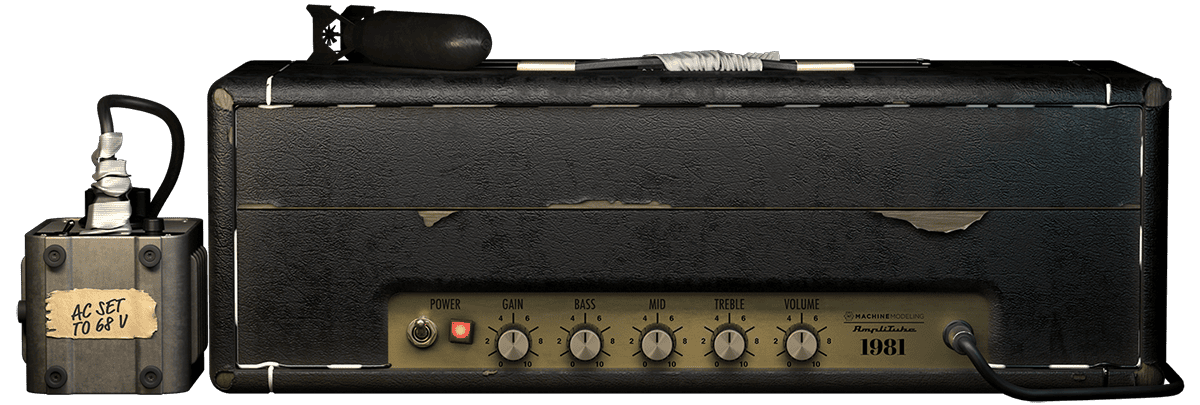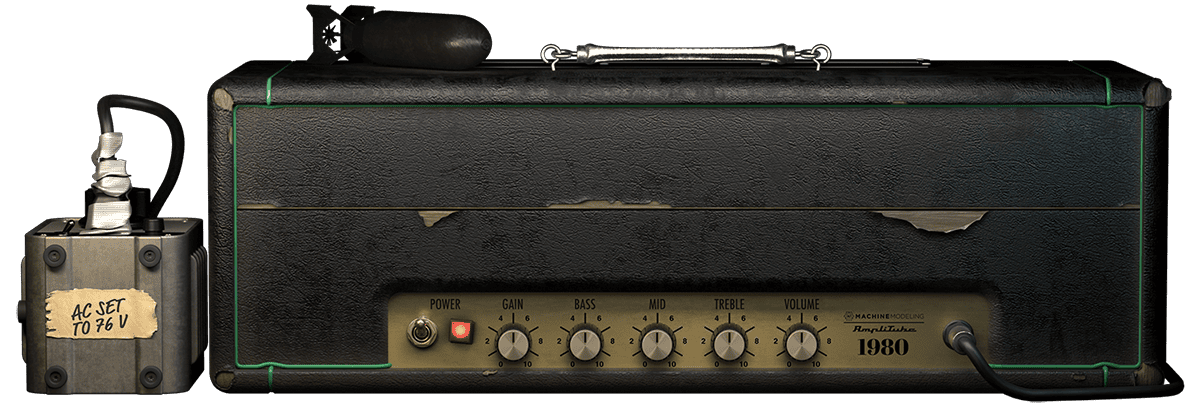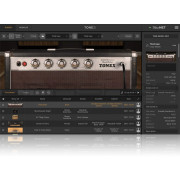You're currently on:

Tonex Signature Collection
The dark and moody tones of two iconic albums
The Brown Sound 80/81 is the second installment in our limited TONEX Brown Sound series, capturing the darker swagger and heavier edge that marked a milestone in the guitarist's evolution. Carefully designed to match the recorded tones of two iconic early-'80s albums, this collection features 73 meticulously crafted Tone Models, including several amp-only captures to use with your favorite IRs or running through a real cab live on stage.
We didn’t just chase the tone; we explored every possibility, delivering both authentic recreations and thoughtful variations to reflect the many theories about how these legendary tracks were recorded. From raw rhythm crunch to fiery lead tones, these models accurately recreate a sound that inspired generations and redefined what the guitar could be.

Collection Overview
- 73 exceptional Tone Models for use across the entire TONEX ecosystem
- Based on a ′68 Marshall Super Lead modified to serial number #12301 specs
- Models feature multiple 1960 Marshall cabs with different speakers and amp-only captures
- Details include various Variac™ settings, and run through a specific signal path for vintage tone
- Captured using period spec studio gear, just like the original recordings
- Created using AI Machine Modeling™ technology with advanced training
- Compatible with all TONEX software versions, including the free TONEX CS
- Tone Models can be easily loaded to TONEX pedals for live performance
As with all collections in the series, these Tone Models were crafted using period-correct gear and capture techniques to recreate the middle two albums of that era genuinely. Each Tone Model reproduces the recorded album tone in exquisite detail, offering an ideal foundation for adding time-based effects—either within TONEX or through your favorite pedal.
1980 Tone Models
On the 1980 album, the tones are thicker, drier, and more saturated than on the second album, marking a return to a raw, aggressive sound that echoes the ferocity of the debut. It’s more in-your-face with a noticeable midrange punch, tighter low end, and more focused articulation. It reflects a shift toward a more modern, high-gain tone, hinting at the sonic direction that would influence the next generation of rock and metal players.
Using his Ibanez Destroyer with a Super 70 pickup, the artist produced a brighter, more biting sound compared to the darker tones of the Super Strat. The Echoplex delay and preamp section remained in use, along with 20-watt Greenback- and 25-watt Blackback-loaded cabs, and a relatively simple signal chain. Captures from this period reflect the stripped-down energy, featuring a punchy, immediate sound with an unrefined swagger that defined this album.

1981 Tone Models
Compared to the raw brightness of 78/79, the 1981 tone is tighter and more controlled, with pronounced low-mids and a more percussive attack. There’s less of the spacious, open-air feel of the earlier records, replaced by a thick, almost claustrophobic intensity that matches the album’s darker vibe. The gain is higher, the reverb is dialed back, and the overall sound feels more focused, brooding, and polished, yet still unmistakable.

Key changes included switching to a straight 1960B cabinet with G12-65 speakers, re-biasing the amp, and experimenting with lower Variac voltages (down to 68V) to add sag and harmonic complexity. Sylvania 6CA7 tubes likely contributed to the saturated mids and deeper sustain, while Franky’s hotter pickup gave the sound a moodier, more aggressive edge. The theorized addition of a switching system helped create a cleaner and stronger signal to the amp by removing effects when not in use. These captures focus on capturing that brooding tone—thick, harmonically rich, and emotionally charged.
The amp: “The ONE”
At the heart of the Brown Sound 80/81 collection is “The ONE” — a meticulously crafted Marshall-style amp built from the ground up with the exact same spec as the infamous 1968 Super Lead serial number #12301, including crucial mods that capture the DNA of the early brown sound like no other amp model.
A big part of that sound comes from the Fat Cap mod, a custom tweak to the preamp’s second gain stage that increases low-frequency gain and creates that signature chewy midrange and hair on every note. Combined with a 50K mid pot (which shifts the EQ balance toward a more vocal, aggressive midrange), as found on the legendary #12301 Plexi, the amp punches with the exact presence and attitude heard on the earliest Brown Sound recordings.

A 100K NFB (Negative Feedback Resistor) from a 4Ω tap was added to the amplifier to further refine the distortion characteristics, making the tone a little bigger and bolder, just like those early recordings.
Under the hood, Heyboer transformers (faithful recreations of the original Dagnall iron) deliver the correct dynamics and feel that only properly wound vintage-style transformers can. These aren’t just clones; they’re the backbone of the amp’s response and harmonic complexity.

Devil in the details
Every decision in Brown Sound 80/81 was made to capture not only the gear but also the energy, experimentation, and sonic evolution of the era. From confirmed setups to widely debated studio techniques, this collection features all variations necessary to achieve the tones on those albums for all players.
To replicate the studio workflow of the era, each cabinet was captured with two microphones positioned at deliberate, offset angles—one aimed at a brighter "high" speaker and one at a darker "low" speaker—just as the original album mixes were. The microphones used include a pair of SM57s and a vintage U67 option.
R&D also involved extensive tube testing (EL34, 6CA7, 6550) to establish the baseline voicing before final captures. The 6CA7 became the preferred output tube, along with a change to v2 using a Svetlana 12AX7. For 1980 sessions, the amp ran with all four power tubes engaged and Variac™ options at 76 V and 89 V to fine-tune feel and headroom.

For 1981, additional low-voltage options at 71 V and 68 V were introduced; the Echoplex was removed while the flanger and phaser remained in-line (bypassed) to impart subtle coloration. Tone Models include album-voiced, raw, and room versions alongside amp-only sets, plus Standard, HOT, and Extra-HOT variants so you can match your guitar and pickup design perfectly. Use the amp-only captures with TONEX VIR cabs or your own IRs.

Behind the collection
Jim Gaustad’s obsession with guitar sound began in the late ′70s, sparked by hearing Van Halen’s debut album. From gigging professionally at age 12 to touring nationally with original bands in the ′80s, Jim was always chasing the perfect sound, rebuilding amps on the road, modifying vintage Marshalls, and crafting custom pickups from spare parts. His relentless pursuit of authentic tone led to the formation of The G Men, a no-gimmick Van Halen tribute band known for replicating the original gear and sound. After Ed’s passing, Jim launched the Brown Sound Quest on YouTube, diving deep into vintage circuits, studio techniques, and signal chains to honor the sonic legacy that inspired it all.



















































